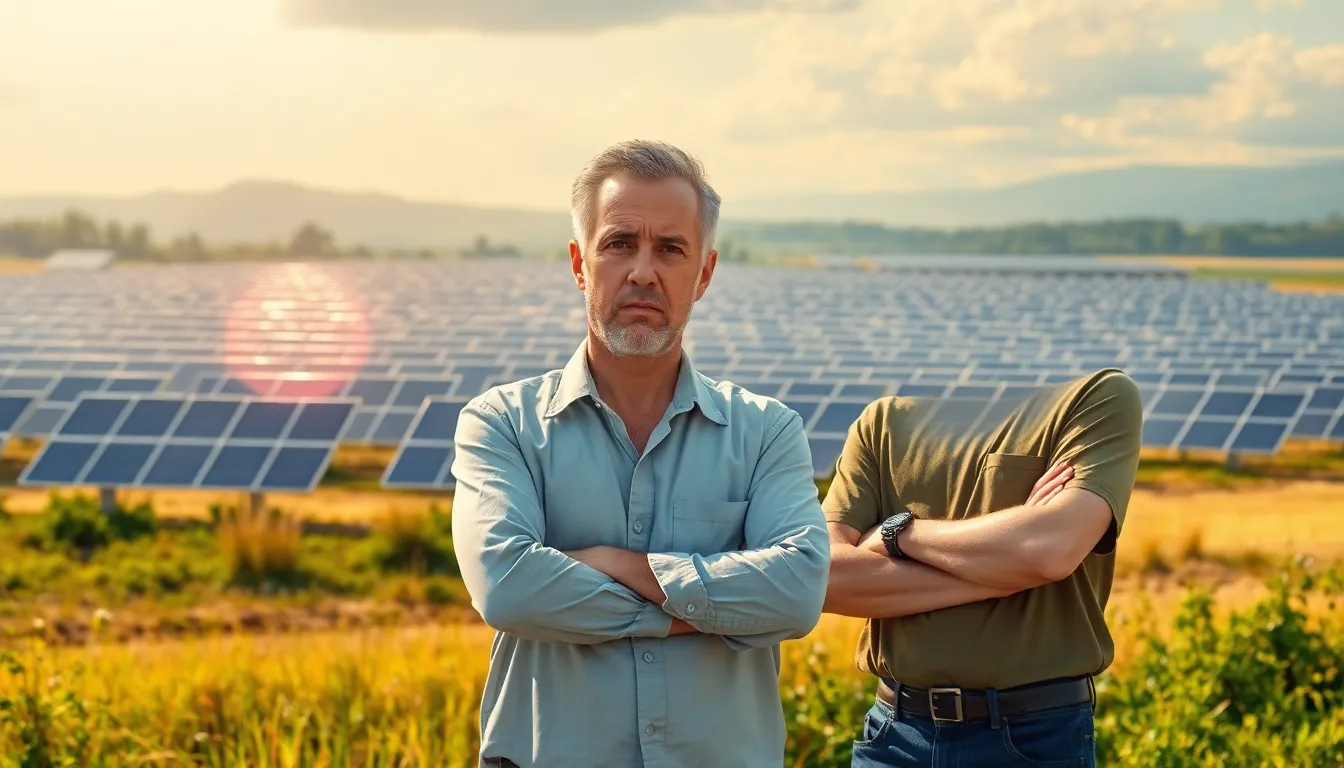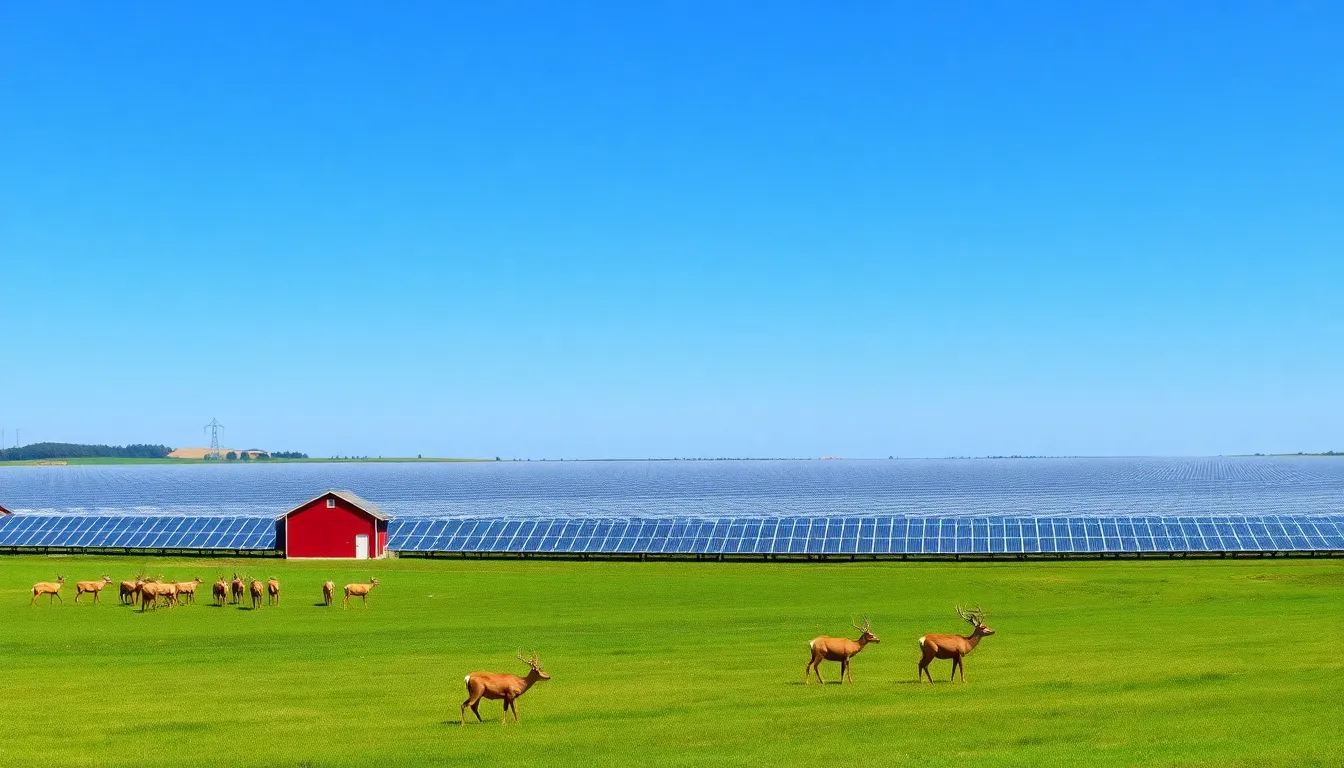Phone:
(701)814-6992
Physical address:
6296 Donnelly Plaza
Ratkeville, Bahamas.

Living near a solar farm might sound like a bright idea, but it comes with its own set of shadows. While harnessing the sun’s power is a noble cause, residents often find themselves grappling with unexpected downsides. Picture this: you’re enjoying a peaceful afternoon, and instead of the soothing sounds of nature, you hear the hum of inverters or the rustle of maintenance crews. Not exactly a serene escape, right?
Moreover, the aesthetic appeal of those shiny panels can clash with the picturesque views you once cherished. Suddenly, your backyard looks less like a tranquil retreat and more like a scene from a sci-fi movie. And let’s not forget the potential impact on property values—who wants to buy a home next to a field of solar panels? As we dive deeper into the not-so-sunny side of solar farms, it’s time to shed some light on what living nearby really means.
Solar farms consist of large installations designed to capture solar energy and convert it into electricity. These farms typically include thousands of solar panels arranged in rows to maximize sunlight exposure. Utility companies often establish solar farms on expansive land areas to generate significant power for local grids.
The scale of solar farms can vary dramatically, ranging from small community projects to large industrial sites covering hundreds of acres. This range can impact the surrounding environment and local ecosystems. While renewable energy production is crucial, residential proximity brings potential concerns.
Solar farms operate efficiently by utilizing photovoltaic cells to harness sunlight, but they come with challenges for nearby residents. Noise from cooling systems and inverters may disrupt the tranquility often associated with rural living. Additional construction and landscaping activities can elevate noise levels during maintenance operations.
Aesthetic considerations also play a role in community acceptance of solar farms. The stark appearance of solar panels contrasts with natural landscapes, raising questions about their visual impact. Many residents express concerns over how these installations alter the scenic beauty of their surroundings.
Property values often face scrunity near solar farms. Studies indicate that homes adjacent to these energy installations might experience depreciation due to perceived drawbacks. Market dynamics can shift as potential buyers factor in the proximity to solar farms when considering property purchases.
Understanding these aspects allows residents to make informed decisions about living near solar farms. Awareness of both the environmental and economic implications is critical in assessing the benefits and disadvantages of such locations.

Living near a solar farm can influence both local ecosystems and land usage. The presence of large solar installations entails significant environmental considerations.
Land occupied by solar farms often displaces agricultural use or natural landscapes. Converting these areas to solar energy production can reduce available land for farming. Further, converting fertile land into industrial-scale energy generation may affect food security. Many communities express concerns about potential loss of green space. The necessity for land can conflict with local development objectives, reducing opportunities for residential or commercial growth. Supporting renewable energy is essential, yet balancing land use is critical for long-term environmental health.
Wildlife habitats often face challenges when solar farms establish operations. Species that thrive in open fields or forests may lose their homes. Solar energy projects can fragment ecosystems, complicating animal migration patterns. Birds and other wildlife sometimes collide with solar panels, leading to increased mortality rates. Moreover, the noise and human activity associated with solar farm maintenance can further deter wildlife. Protecting local biodiversity remains crucial, highlighting the need for careful planning in solar energy development.
Living near a solar farm presents several economic challenges that residents should consider. While solar farms promise renewable energy, they can bring unintended financial consequences for nearby homeowners.
Studies indicate that homes adjacent to solar farms may experience decreased property values. The presence of solar panels can deter potential buyers due to aesthetic concerns and noise disruption. Many buyers prioritize scenic landscapes, and solar farms disrupt the natural beauty of the area. In some cases, properties can lose value by approximately 5% to 10% compared to similar homes located farther away. Community perceptions of solar farms as undesirable can further contribute to lower demand, exacerbating the decline in property values.
The job market around solar farms often undergoes significant shifts. Local employment opportunities may dwindle, particularly in sectors such as agriculture or tourism due to land repurposing. Farmers may find fewer job prospects or reduced income if agricultural land is converted. Furthermore, while solar farms may create temporary construction jobs, these positions are typically short-term. Long-term employment opportunities associated with solar operations are usually limited and may not replace the jobs lost from previous land uses. Communities may struggle to sustain economic growth, as renewable energy jobs often don’t compensate for the jobs that disappear.
Living near a solar farm can present distinct challenges, particularly regarding aesthetics and noise. Residents often face visual and auditory disturbances that impact their living experience.
The presence of expansive solar panels significantly alters the landscape. A large installation may cover many acres with rows of reflective surfaces. Many residents express discomfort over the stark contrast these panels create against natural scenery. A report by the National Renewable Energy Laboratory indicates that this visual impact can lead to community resistance. Opinions among homeowners often lean towards the concern that solar farms disrupt local charm and beauty. Studies suggest these aesthetic changes can deter potential buyers, further complicating property value discussions.
Inverters and maintenance activities can generate noticeable noise disturbances. Equipment operations often produce sounds that can reach 60 decibels, similar to a normal conversation. Residents describe disruptions caused by routine maintenance crews working in close proximity. The continuous background noise might disrupt the tranquility sought in rural environments. Furthermore, complaints regarding these disturbances are common among homeowners close to solar farms. Research indicates that noise pollution significantly diminishes the quality of life for many living nearby, leading to increased dissatisfaction with their residence.
Living near a solar farm raises several health-related questions for nearby residents.
Exposure to electromagnetic fields has become a focal point in discussions about solar farms. Studies indicate that prolonged interaction with these fields might pose health risks, including headaches and fatigue for some individuals. Noise from inverters and maintenance activities could contribute to increased stress levels and sleep disturbances among residents. Reports suggest that similar noise levels can disrupt daily life, affecting overall well-being. Air quality issues also arise, particularly during construction and maintenance phases, leading to concerns about respiratory health. Pollutants released during these activities can exacerbate existing health conditions. Furthermore, proximity to solar farms might lead to increased anxiety about potential long-term effects, even if conclusive evidence is lacking. The amalgamation of these concerns creates complexity in the decision-making process for individuals contemplating living near such installations.
Living near a solar farm presents various challenges that can significantly impact residents’ quality of life. The noise from equipment and maintenance activities disrupts the peaceful environment many seek in rural areas. Additionally the visual presence of solar panels can clash with the natural beauty of the landscape leading to community dissatisfaction.
Concerns about property values further complicate the situation as potential buyers may be deterred by these factors. The environmental implications also raise questions about land use and local ecosystems. While solar energy is a vital step toward sustainability it’s essential for individuals to weigh these disadvantages before making a decision about living near such installations.